
Clan Fergusson is a Scottish clan. Known as the Sons of Fergus they have spread across Scotland from as far as Ross-shire in the north to Dumfriesshire in the south.
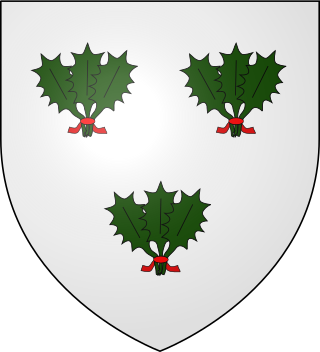
William (Thomas) Irvine was a Scots soldier born in Dumfriesshire in Scotland. His father was William de Irwyn of Wodehouse, Laird of Bonshaw Tower.
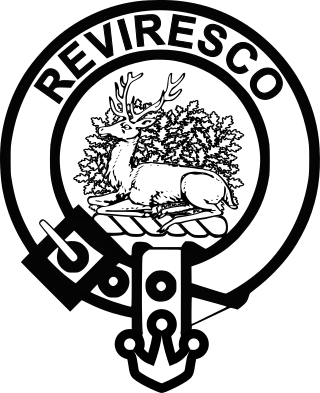
Clan Maxwell is a Scottish clan of the Scottish Lowlands and is recognized as such by the Lord Lyon King of Arms. However, as the clan does not currently have a chief, it is considered an armigerous clan.
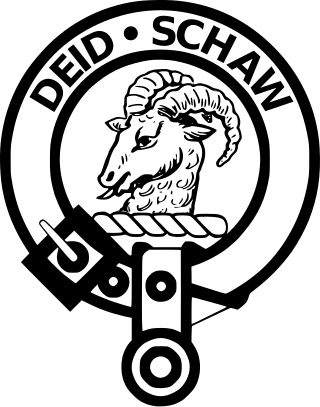
The Clan Ruthven is a Lowland Scottish clan.
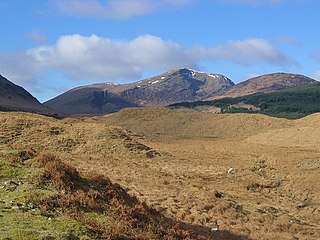
The Battle of Dalrigh, also known as the Battle of Dail Righ, Battle of Dalry or Battle of Strathfillan, was fought in 1306 between the army of King Robert the Bruce against Clan MacDougall of Argyll, who were allies of Clan Comyn and the English. It took place at the hamlet of Dalrigh near Tyndrum in Perthshire, Scotland. Bruce's army, reeling westwards after defeat by the English on 19 June at the Battle of Methven, was intercepted and all but destroyed, with Bruce himself narrowly escaping capture. The battle took place sometime between July and early August, but the exact date is unknown.

Clan Seton is a Scottish clan which does not currently have a chief; therefore, it is considered an armigerous clan.

Clan Dunbar is a Scottish clan of the Scottish Lowlands.

Clan Johnstone is a Border Reiver Scottish clan.
Kirkpatrick is an Irish (Ulster) and Scottish surname, and occasionally a given name, possibly a branch of the Cenél nEógain of the Northern Uí Néill. The name traditionally relates to a church ("kirk") dedicated to Saint Patrick.

The Forresters are an ancient and noble clan of the Scottish Lowlands.

Clan Moncreiffe is a Highland Scottish clan.

Clan Wemyss is a Lowland Scottish clan.

Clan Udny is a Scottish armigerous clan from Aberdeenshire, Scotland.

Clan Young is a Scottish clan. The clan does not currently have a clan chief and therefore it is considered an armigerous clan.
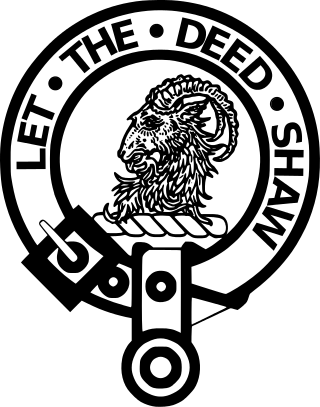
Clan Fleming is a Lowland Scottish clan and is officially recognized as such by the Lord Lyon King of Arms. However, as the clan does not currently have a chief that is recognized by the Lord Lyon King of Arms it is therefore considered an armigerous clan.
Clan Paterson is a Lowland Scottish clan. The clan is officially recognized as such by the Lord Lyon King of Arms; however, as the clan does not currently have a chief it is considered an Armigerous clan.

Clan Russell is a Scottish armigerous clan, with claimed origins in Normandy. It has ancestral ties to the English Dukes of Bedford, and has numerous descendants in Great Britain and America.

Clan Tailyour, also known as Clan Taylor, is a Scottish clan. The clan is recognized by the Lord Lyon King of Arms but it does not currently have a clan chief therefore it is considered an armigerous clan. The surname Taylor is also considered a sept of the Clan Cameron of the Scottish Highlands who are descendants of Taillear Dubh na Tuaighe (b.1550), see: Taylor sept.

Clan Cheyne is a Scottish clan. The clan is officially recognized by the Lord Lyon King of Arms, however as the clan does not currently have a chief recognized by the Court of the Lord Lyon, it is therefore considered an Armigerous clan. The surname Cheyne is also recognized as a sept of the Clan Sutherland, and is accepted as such by the Clan Sutherland Society in Scotland.
Sir John de Keith, Marischal of Scotland, was a Scottish noble. He was a son of Hervey de Keith and Margaret de Douglas.




















